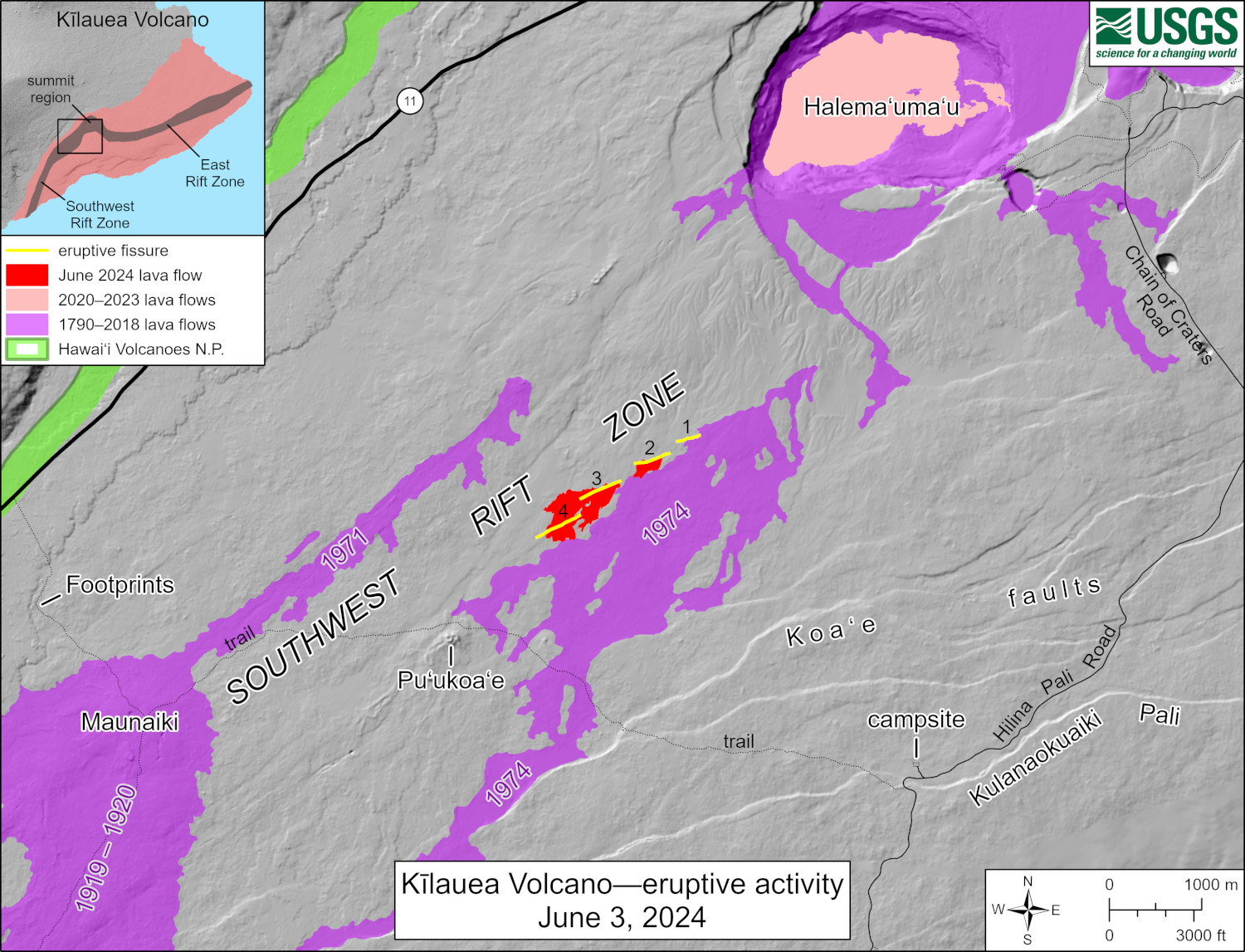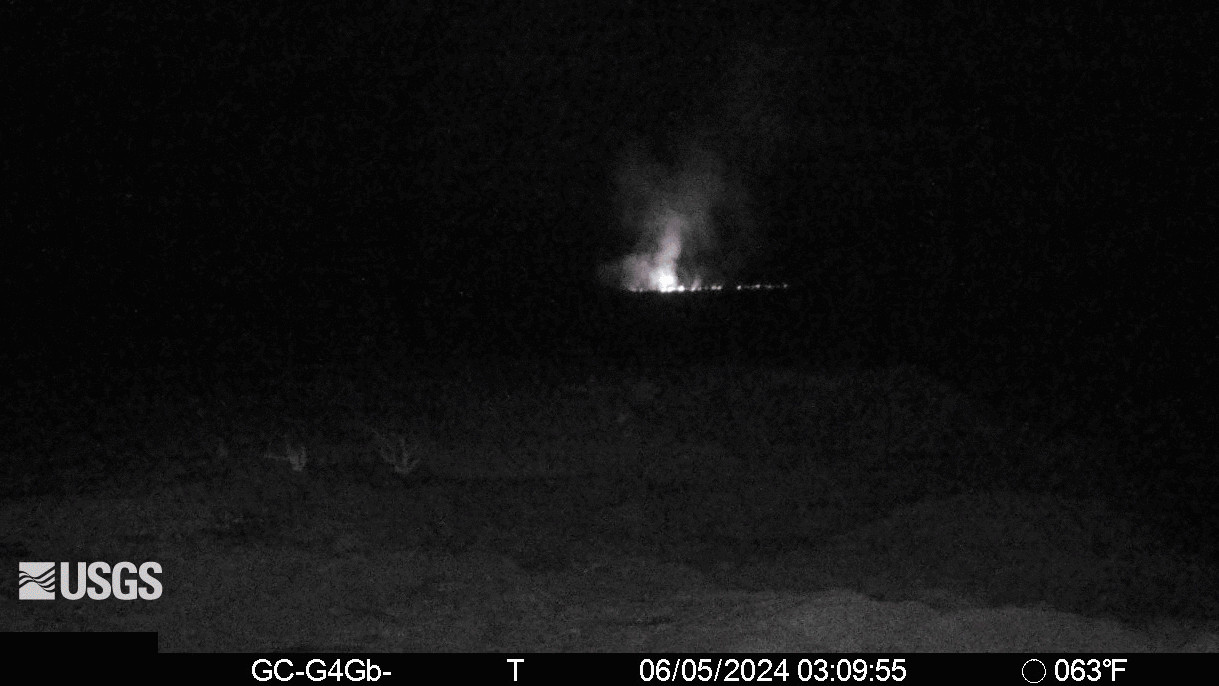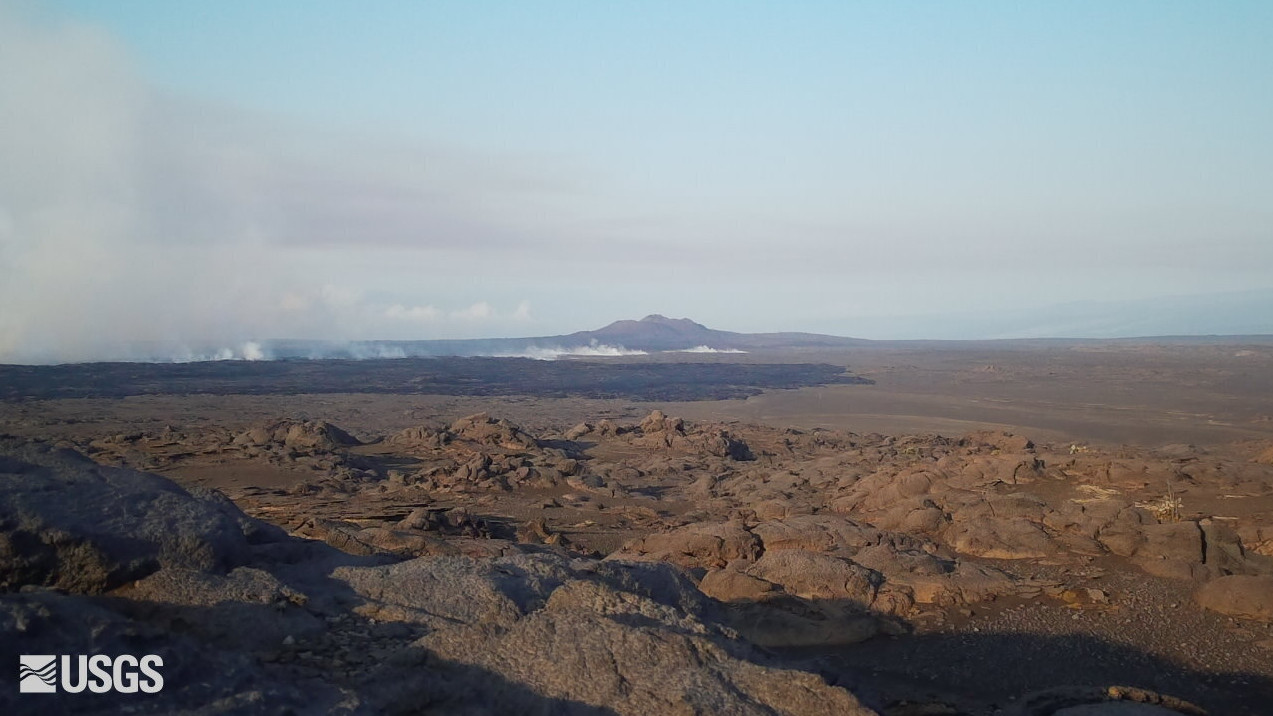(BIVN) – The eruption that began southwest of Kīlauea’s summit on June 3 remains paused, however the fissures that formed during the activity were seen glowing on webcams overnight.
“Activity in this region remains dynamic and could change quickly,” scientists with the USGS Hawaiian Volcano Observatory wrote on Tuesday evening. “All activity is located within Hawai’i Volcanoes National Park. HVO continues to closely monitor Kīlauea and will issue additional notices as needed.”
The site of the latest eruption is in a closed area of Hawaiʻi Volcanoes National Park. Park officials say the Kaʻū Desert area is closed due to volcanic gas hazards including Hilina Pali Road, Kulanaokuaiki Campground, Pepeiao Cabin and Maunaiki Trail. Kaʻaha is open and accessible by Puna Coast Trail.
From the most recent update by the USGS HVO, issued at 4:10 p.m. on June 4th:
Although lava effusion ceased around noon yesterday, June 3, areas of incandescence and elevated volcanic gas emissions continue. At approximately noon today, a sulfur dioxide emission rate of approximately 5,500 tonnes per day was measured. While this emission rate is decreased compared to the measurement of 12,000 tonnes per day yesterday afternoon, it remains elevated for an area that is not currently erupting lava. Volcanic tremor, a signal associated with fluid movement, continues to be recorded on summit seismometers, though earthquake activity and rates of ground deformation remain low in the region of Kīlaueaʻs summit and upper rift zone areas.

USGS: “This reference map depicts the location and order of formation of fissure vents that began erupting from Kīlauea Southwest Rift Zone at approximately 12:30 a.m. HST on June 3, 2024. The red outlines indicate the limits of new lava flows as of 10 p.m. HST on June 3. Lava effusion from the vents ceased around 12:30 p.m. in the afternoon on June 3, but volcanic gas emissions and glow were still observed in the afternoon and overnight hours.”
Fissure eruptions are often short-lived but can be difficult to forecast. They can display pauses of hours to days. The large crack system that developed since the eruption onset extends well past the westernmost active fissure, indicating that magma has been emplaced at shallow depths beneath the surface all the way to the east side of Maunaiki. While the eruption yesterday occurred due to the intrusion of new magma to the Southwest, it occurred in the vicinity of the dike that formed close to the surface on January 31, 2024. Input of newer, hotter magma could destabilize the stored magma. While the current eruption may be over, it is equally likely that it might resume at or to the west of the last active fissure.
HVO continues to closely monitor Kīlauea, which remains at alert level/aviation color code WATCH/ORANGE. HVO will issue a Kīlauea daily update tomorrow morning. If activity changes significantly before then, another Volcano Activity Notice will be issued.
Eruptive activity and unrest is currently restricted to the summit and upper rift zone regions. Rates of seismicity and ground deformation beneath the middle and lower East Rift Zone and lower Southwest Rift Zone are low.



by Big Island Video News8:20 am
on at
STORY SUMMARY
HAWAIʻI VOLCANOES NATIONAL PARK - On Tuesday, scientists noted that the sulfur dioxide emission rate was elevated for an area that is not currently erupting lava.